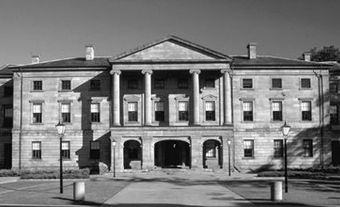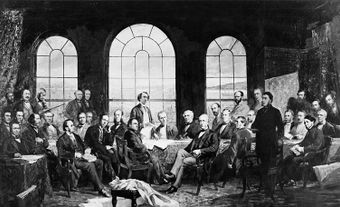Section 33 of the Charter of Rights and Freedoms is called the notwithstanding clause. It is also called the override clause. It is part of the Constitution of Canada. The clause was crucial in winning provincial support for the Charter. The clause allows governments to bypass some rights. Such an override must be renewed after five years. Use of the clause is politically hard and therefore rare. It has been used by provinces only a handful of times. It has never been used by the federal government.
(This article is a plain-language summary of the Notwithstanding Clause. If you are interested in reading about this topic in more depth, please see our full-length entry, Notwithstanding Clause.)

Section 33 of the Charter
Under Canada’s Constitution, the judges decides if the government’s actions are within the rules. The courts rule on whether a government has broken a rule or norm of the constitution. If so, they can force the government to change its actions.
However, section 33 of the Charter allows a government to bypass a court’s ruling. Governments can exempt (excuse) some laws from certain sections of the Charter. They are not allowed to do this with democratic, mobility or language rights.
Background
The power to change Canada’s Constitution used to belong to Britain. This changed in 1982. The government of Pierre Trudeau transferred control of the Constitution to Canada. This was called patriation. His government also decided to add the Charter of Rights and Freedoms to the Constitution.
Some provincial leaders thought the Charter might give courts and judges too much power to interpret its meaning. They feared this would restrict the right of provinces to make laws as they saw fit. Most of the provinces agreed to support the Charter on one condition; that it have a clause allowing any government to exempt laws from certain Charter rights. These included fundamental rights, equality rights and legal rights. The laws can be exempted for a period of five years. They must then be renewed.
Use of the Clause
In 1988, the Quebec Liberal Party invoked the clause to pass Bill 178. It limited the use of English-language signage and advertising. This violated freedom of expression under the Charter. When it came up for renewal five years later, it was replaced by Bill 86. It complied with Charter rights.
Outside Quebec, the clause has been written into six bills and passed into law four times. In 1982, Chris Pearson’s Progressive Conservative government in Yukon added the clause to a land-planning bill. It did not pass into law.
In 1986, Grant Devine’s Progressive Conservative government in Saskatchewan used the clause in back-to-work legislation.
In Alberta in 2000, Ralph Klein’s Progressive Conservative government used the clause to pass legislation against same-sex marriage. However, marriage is an area of federal jurisdiction.
In 2017, Brad Wall’s Saskatchewan Party used the clause to override a court ruling. It would have removed provincial funding for non-Catholic students in Catholic schools.
In 2018, Doug Ford’s government invoked the clause in Ontario. The Ford government had passed legislation to reduce the size of Toronto’s municipal council. This law was struck down by an Ontario Superior Court judge.
In June 2019, Quebec’s Coalition Avenir Québec (CAQ) government passed Bill 21 into law. It is known as the secularism bill. It bans public employees from wearing religious symbols at work. (See Quebec Values Charter). The government invoked the clause to block anyone from challenging the law.
In June 2021, the Ontario government under Doug Ford used the clause for a second time. An Ontario Superior Court justice had struck down an earlier bill as unconstitutional. The bill concerned pre-election third-party spending. The Ford government then added the clause to the bill. It was reintroduced into the legislature and was passed.
See also Constitution of Canada (Plain-Language Summary); Constitution Act, 1867 (Plain-Language Summary); Constitution Act, 1982 (Plain-Language Summary); Canadian Charter of Rights and Freedoms (Plain-Language Summary); Patriation of the Constitution (Plain-Language Summary).

 Share on Facebook
Share on Facebook Share on X
Share on X Share by Email
Share by Email Share on Google Classroom
Share on Google Classroom







